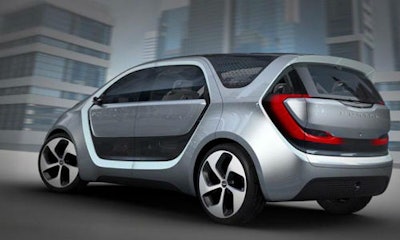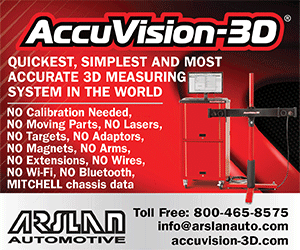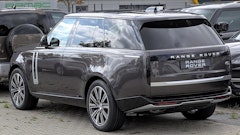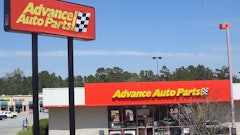
By Jeff Sanford
Toronto, Ontario — January 8, 2017 — This week’s Autonomous Report dives into some of the autonomous vehicle (AV) news coming out of the Consumer Electronics Show, Tesla updates and improves its Autopilot technology, the latest development from the AV project now being tested in Ontario by the University of Waterloo and much, much more!
– The Consumer Electronics Show (CES) is taking place in Las Vegas this week. Major OEMs have a larger presence in the show than ever as cars evolve in terms of their use and form in the AV era. Forbes notes that, “For the first time, Fiat Chrysler Automobiles (FCA) has held a key event at CES in Las Vegas, introducing the Chrysler Portal, a futuristic people mover … designed by and for the millennial generation. This means a vehicle that supports tech-savvy, connected, on-demand lifestyles … The concept puts Fiat Chrysler into the game on autonomous technology and engineering. The front-wheel-drive battery-electric concept is also capable of semi-autonomous operation and engineered to be upgradable to higher levels of autonomy and technology.”
– BMW has a technology at CES this year that creates, “… a free-floating screen next to the steering wheel. The full-color display will show controls for, say, air conditioning or in-car entertainment, while a camera detects the position of the driver’s finger relative to the display, allowing them to adjust controls by poking at a screen made of light. It’s not clear when the technology will arrive in cars, but a gesture control system shown off by the automaker in 2015 is already available in production models.” Ford is also at CES and announced that it will take, “Amazon’s smart assistant, Alexa, out of the home and into the automobile. Passengers will be able to ask Alexa to perform tasks that might usually require paying attention to the center console—making requests for snack stop locations, weather forecasts, or music, for instance.” The report notes that, “In both cases, the automakers are clearly looking to keep drivers’ eyes on the road. That’s an admirable goal given that distracted driving deaths are on the rise and semi-autonomous vehicles could compound the problem.”
– The many “year in review” articles that pop up around New Year’s continued to emerge this week. One report notes a couple of technologies that appeared this year that will be important for the emerging Internet-of-Things era to allow AVs to interact with the environment. One technology: Google began testing, “… solar-powered drones at Spaceport America in New Mexico to explore ways to deliver high-speed Internet from the air. Their purported millimeter wave technology could deliver data from drones up to 40 times faster than 4G.” Another neat project involves a satellite-based internet system proposed by Elon Musk that would see 4,425 low-Earth orbit satellites deployed to, “… blanket the entire planet in broadband.” Also: “Amazon’s drone delivery program ‘Prime Air’ made its first delivery in the U.K. this year. Expect a much bigger rollout in 2017.” Overlooked in many tech articles is the fact that convenience store chain 7-11 also made, “… 77 drone deliveries this year, beating Amazon by a long shot.” Major OEM Mercedes has also made a major commitment to drone delivery, committing $500 million to a “van and drone tech startup” known as Vision Van that would see the van’s rooftop serve as a launch and landing pad for drones. Uber also announced plans this year to enter the “flying car service arena” when it published a whitepaper detailing its plan to launch an “on demand aviation” service to be called Uber Elevate.
– The latest version of Tesla’s Autopilot mode now includes, “… eight cameras, 12 ultrasonic sensors, and an onboard computer with more than 40 times the processing power of the previous generation.” Elon Musk also said this week that all new cars will have, “… level 5 autonomy. This means that by 2017, Tesla cars will be fully capable of driving themselves with zero interaction from a human driver.” According to a report, “Production for these fully autonomous Model S and Model X electric cars is already underway, and they include significant upgrades. Instead of a single camera, the system now includes eight to allow for fully 360-degree vision. The vehicles will have 12 ultrasonic sensors, and each will include an onboard computer … Turning on Autopilot functionality will cost Telsa owners $8,000, a major increase in price from the $3,000 they had to spend before.” The report goes on to claim that, “Tesla’s new Autopilot is a significant advancement from its currently available self-driving technology, which essentially functions as advanced cruise control. Right now, a Tesla car can maintain its speed, stay in its lane, and prevent itself from ramming into the vehicle in front of it on a freeway, but it isn’t capable of driving itself through a busy city intersection. Musk envisions (and has demonstrated) that the Tesla of the future will be able to drive through residential streets to pick you up, navigate through commercial districts to drop you off, and park itself safely.”
– Another CES-based article notes that CEO of AV chip-maker Nvidia, Jen-Hsun Huang, delivered a keynote address at this year’s event. A report on MIT Technology Review notes, “The company has announced it wants to use semi-autonomous driving technology to make manual driving safer. Its system will … intelligently provide cues by using cameras to detect what a driver hasn’t seen … such a setup might be one way to solve what those in the field of autonomous driving call ‘the hand-off’—the process by which a computer hands control of the vehicle back to a human. Such aids do, of course, need to be used with some caution: manual driving will always require concentration. But if drivers are able to stay alert, they could help make the roads a little safer.”
 |
|
| Nvidia CEO Jen-Hsun Huang delivers a keynote address at CES 2017. |
– John Casesa, Ford’s Group VP of Global Strategy, appeared at CES and predicted that, “Traditional automakers are ‘screwed’ if they don’t adapt to rapidly changing technologies while, if they do, they could be in for a period of much faster growth,” according to a report from the Financial Post. According to Casesa, “Our business is not growing faster than GDP, but I think if we change the definition of mobility and the Ford mindset from cars to mobility, we’re going to be in a faster growing market … If we don’t figure it out, we’ll be screwed. I think that’s true for all the auto companies.”
The report went on to note that the, “The dramatic changes facing incumbent automakers are evident at CES itself. The biggest technology show in the world, CES has in recent years become the venue of choice for automakers and their suppliers to unveil new products and capabilities, increasingly overshadowing the North American International Auto Show in Detroit, which begins next week … Over 200,000 square feet, or more than 10 per cent of CES’ total floor space, is dedicated to the auto industry this year.”
A Deloitte consulting representative was quoted as saying the current move to AV-enabled car can be thought of this way: “Arguably, I think (the auto industry) is the largest disruption out there second only maybe to healthcare … They’re all wrestling with these fundamental questions about how value will be created.” The report also notes that Ford has now created a separate company called Ford Smart Mobility, which is, “… focused on growing its services business.” The move is considered an example of how it is auto companies are getting ready to offer access to fleets of AVs as the way ownership around cars shifts in the new world. The Deloitte exec likened the move to Apple, “… developing iTunes while the core company focuses on building iPods.” Casesa put the potential opportunity in perspective: “Every minute in the United States 30 vehicles are sold … but every minute there are nine million miles travelled, there are 125,000 taxis or Ubers on the road, 60,000 shared rides … If we define (mobility) as people moved, miles travelled, then we think there’s a much bigger business out there for our company. So we don’t think of these changes as threats at all, we think of them as very liberating.”
– The head of BlackBerry’s new automotive software division also made an appearance at CES. According to a report on the Financial Post, he claimed that, “BlackBerry Ltd.’s new automotive operating system has the potential to increase the company’s in-vehicle presence as much as 10-fold … as manufacturers scramble to develop autonomous features for their vehicles, BlackBerry QNX also sees an opportunity to cut out the middleman — in this case, large, Tier 1 suppliers — and work directly with the major automakers to provide the secure software they’ll need … Currently, most in-vehicle software is a series of separate components — blind-spot detection, lane-keep assist, pedestrian recognition — that aren’t able to talk to each other, said John Wall, Senior VP and head of BlackBerry QNX.” Wall was quoted as saying, “The software that’s in the car today, all these discrete components developed on very primitive operating systems … it’s not up to the task of what’s being asked of the vehicle in the future … That’s why you need an operating system like we’ve developed to be able to handle that complexity.” Wall noted that eventually AV software will be considered as important a feature as a transmission in a car. “I think with autonomous drive, the OEM feels it’s as important a feature as a transmission, an engine, a chassis. They want to own that, they’re not going to give that to anybody,” said Wall.
– A couple of other new technologies displayed at CES this year were highlighted in a report on Futurism: A new electric car start-up, Faraday Future, introduced, “… a fully electric, fully connected self-driving car with a 1,050-hp engine that can take it from 0 to 60 mph in 2.39 seconds. And it even includes a smartphone-operated ‘driverless valet’ that parks the car for you.” A German auto company ZF, “…partnered with NVIDIA to create the ProAI, a deep-learning articial intelligence (AI) program that represents a huge step toward ‘intellectualizing’ our vehicles. the ZF ProAI ‘will be able to process inputs from multiple cameras, plus lidar, radar and ultrasonic sensors, in a process we call sensor fusion,’ generating a 360-degree sensory sphere for the vehicle.”
– One of the scientists involved in the AV project now being tested in Ontario by the University of Waterloo was asked what the team has learned so far. “What did we learn specifically? It’s hard to drive autonomously in snowy conditions,” said the professor. The school is testing a Lincoln MKZ developed by Renesas Electronics America, a subsidiary of Japan-based semi-conductor maker Renesas Electronics Corp. According to a story in the Globe & Mail, “One of the key challenges as such vehicles are developed will be weather and how they respond to slippery roads, wind, rain and piles of snow on the sides of roads or highways that might keep critical sensors from operating the way they should.” The car will be demonstrated at CES. “The MKZ is not fully autonomous but can detect another vehicle, sense traffic lights and stop signs and drive a predefined route,” according to the story. “A human driver takes it on the Las Vegas course once and then it can drive autonomously after that first trip,” said the professor. “It can manage a lot of the basic steps of autonomous driving, so over the next six months we hope to take what we’ve built in Stratford and Waterloo and put it on public roads in 2017,” he said.
-A study from a company called Juniper, “… forecasts that the Advanced Driver Assistance Systems (ADAS) and Autonomous Vehicle (AV) market will reach a total global value of $35 billion in 2020, before representing a fourfold increase to reach $144 billion in revenues by 2025 … whilst ADAS still lacks significant mass market penetration, its adoption is set to increase rapidly over the next 5 years driven by a number of factors: Safety Agency specifications will become more stringent, particularly with respect to vulnerable road users such as pedestrians.” The report also notes that large reductions in hardware costs (particularly sensors) will lead to higher rates of adoption. According to the report the top five providers of ADAS tech are Bosch, Continental, ZF Friedrichshafen, Autoli and Delphi.
– Maarten Sierhuis, the chief of R&D at Nissan, thinks the idea that driverless cars could be here in as little as five years is ridiculous. That’s an unreachable short-term goal, he said in a recent interview with Wired. “Even a system that could handle 99 percent of driving situations will cause trouble for the company trying to promote, and make money off, the technology,” according to a report. “We will always need the human in the loop,” the Nissan exec was quoted as saying. The story goes on to note that, “Nissan has a solution: a call center with human meatbags ready to take command via remote control.” According to the story, “Other players in the autonomous field aren’t about to announce their tech can’t match the vagaries of the real world, but they have looked into remote human backups—’teleoperation,’ in the parlance of the business.” As the story notes, “Even cars that can handle just about anything will have the occasional failure, even if that’s being hit by another vehicle. And in that case, you want a human around to decide what to do. It’s like an elevator … You don’t need a human operator, but you’ve still got a button to call for help when you need it.”






















